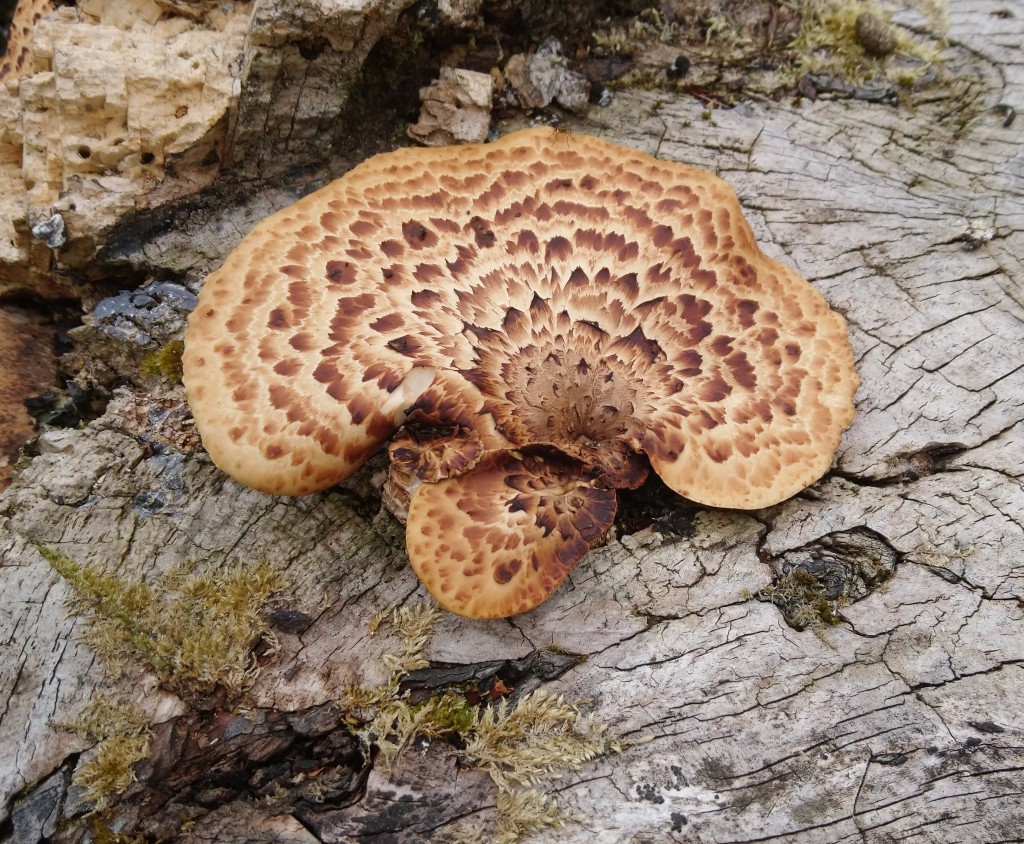
[073] Cerioporus squamosus, Dryad’s Saddle
Introduction
Cerioporus squamosus, Dryad’s Saddle, is a common and widespread bracket fungus, associated with dead or living trees. It is also known as Pheasant’s Back Mushroom.
Taxonomy
Kingdom – Fungi
Phylum – Basidiomycota
Class – Agaricomyetes
Order – Polyporales
Family – Polyporaceaea
Genus – Cerioporus
Scientific Name – Ceriopus squamosus
It has about forty scientific synonyms and is also commonly known as Polyporus squamosus.
It was named in 1778 by a British botanist, William Hydson, as Cerioporus. About fifty years later a Swedish botanist mycologist, Elias Fries named it Polyporus and today both names are still used.
Name
In Greek mythology a dryad is a wood nymph, so the name comes from its appearance and association with trees.
Cerio is a Latin root for a swelling or ulcer and the whole order of Polypores is named after pores. (See below.) The Latin squamosus means scaly.
Description
In [039] Honey Mushroom I said a little about fungi in general and the order Agaricales, most of which look like what we normally think of as mushrooms.
Polyporales is another order, with about two thousand species, many of which are wood rotters.
Polypores are fungi which form large bracket-like fruiting bodies with pores underneath them.
I can’t begin to go into the taxonomy or physiology of fungi but, unfortunately, the set of polypores is not exactly the same as the order Polyporales and neither is a subset of the other!
I also can’t go into the Polyporus/ Cerioporus debate. The genus Cerioporus, created in 2016, consists of about a dozen species, which were formerly part of Polyporus (and some still consider to be Polyporus).
Cerioporus squamosus is usually found on dead tree trunks or stumps. It can form in a shelf structure and has a distinctive scaly appearance on top.

Habitat and use
Dryad’s Saddle has a wide distribution in Europe, Asia, North America and Australia.
It usually grows on decomposing wood but sometimes appears as a parasite on living trees.

The fruiting bodies can be eaten when young.
See also
There are other fungi that grow bracket-like fruiting bodies on trees. We will meet two more.
